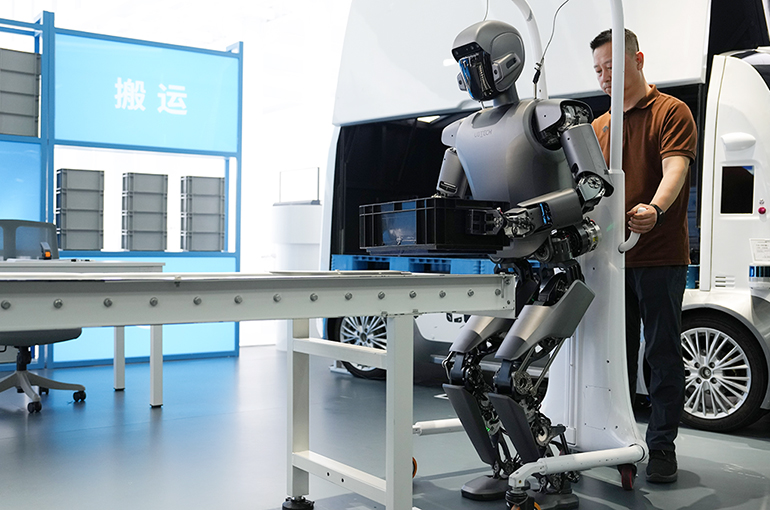 Mass Production Nears for Six-Axis Force Sensors Vital to Humanoid Robots
Mass Production Nears for Six-Axis Force Sensors Vital to Humanoid Robots(Yicai) July 17 -- Six‑axis force sensors, components crucial for humanoid robots to carry out tasks that require high precision, are transitioning from expensive, niche prototypes to the verge of mass production.
In the first half of this year alone, the leading suppliers of six‑axis force sensors delivered around a thousand units each to a number of robot developers, Yicai learned from key component makers and robotics companies.
These sensors provide robots with detailed feedback on forces for each of the three axes (X, Y, Z) and torques (roll, pitch, yaw), enabling precise manipulation and dynamic control. For example, of the more than 30 sensors used in the Optimus Gen 2, Tesla's second-generation humanoid robot, four are six‑axis force sensors.
As Link-touch Technology steadily scales up capacity, its six‑axis force sensors have entered small‑batch production, according to Liu Wuyue, founder of the Beijing-based developer of force control technologies for intelligent robots.
“Compared with industrial robots, humanoid robots are scaling up very quickly, which also presents a challenge for core component suppliers,” Liu noted.
Some 2,000 humanoids were sold in China last year, according to figures from International Data Corporation. Global shipments could hit 18,000 this year, a report by Bank of America Global Research predicted.
Link-touch, which began delivering android force sensors last year, shipped nearly 70,000 sets of force torque sensors in the first half of this year, surpassing last year’s total, Liu said, adding that these products now account for more than half of the firm’s business.
Production costs are also falling fast, dropping 30 percent so far this year, he said. But the market is not yet driven by price wars, as suppliers still have a degree of pricing power, according to Liu. Those with robust research, development, and delivery capabilities will secure the best positions in the evolving humanoid‑robot supply chain, he said.
Without unified industry standards, most high-precision sensor makers customize designs for each robot builder, making mass production harder as each client has its own requirements.
“Humanoid‑robot technology changes fast,” Wang Chuang, president of startup AgiBot’s general business line, previously told Yicai. “This month’s specs might be obsolete next month.” That requires suppliers to respond quickly.
Link-touch has built a customization platform based on a self-developed artificial intelligence model. Clients input their product requirements, and the AI generates the optimal solution. The interface, appearance, and weight requirements for force sensors are different from client to client, Liu said.
“Through this platform, we have shortened the response cycle for customization requests to three to four weeks from the traditional six to eight weeks.” he noted.
Editor: Futura Costaglione